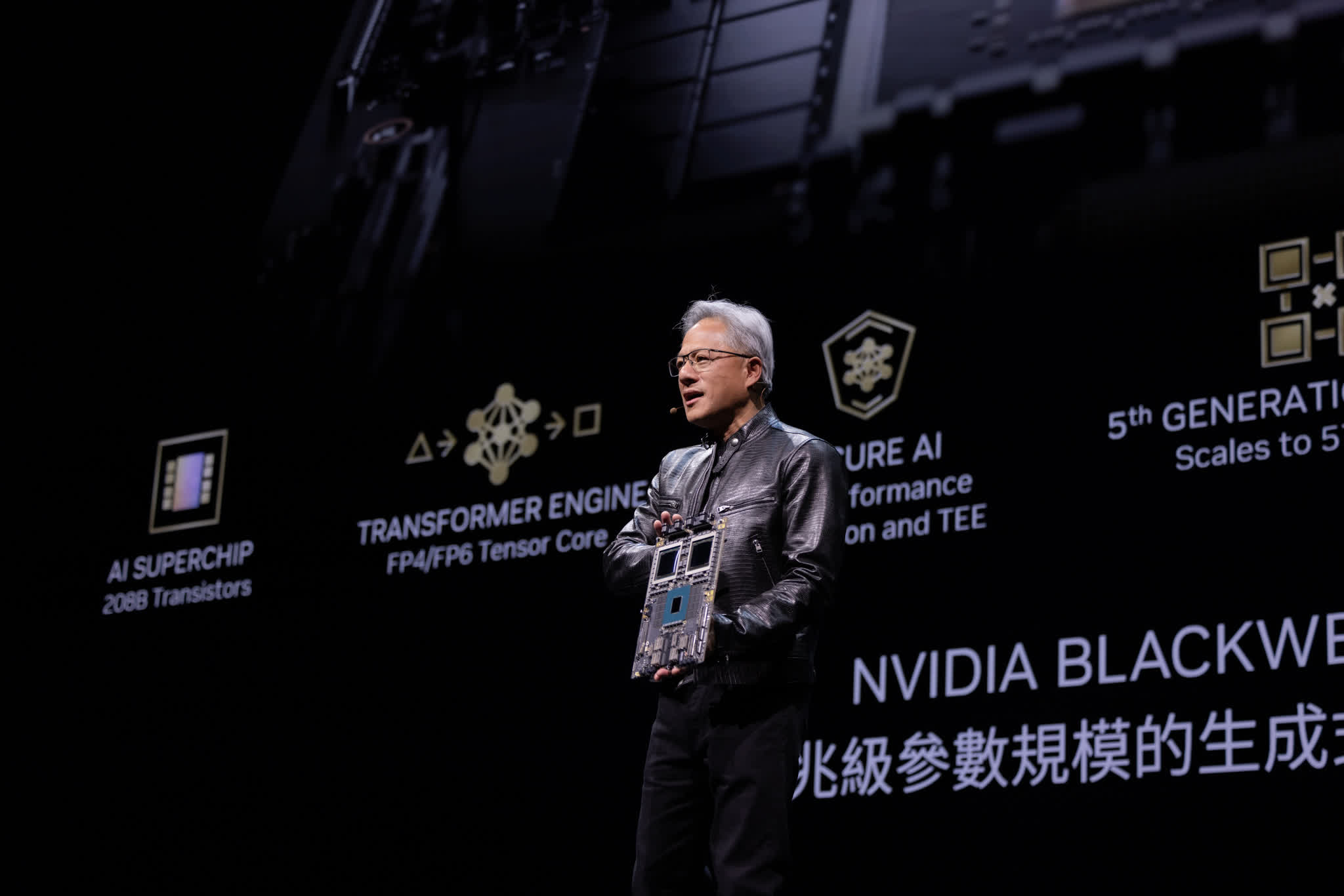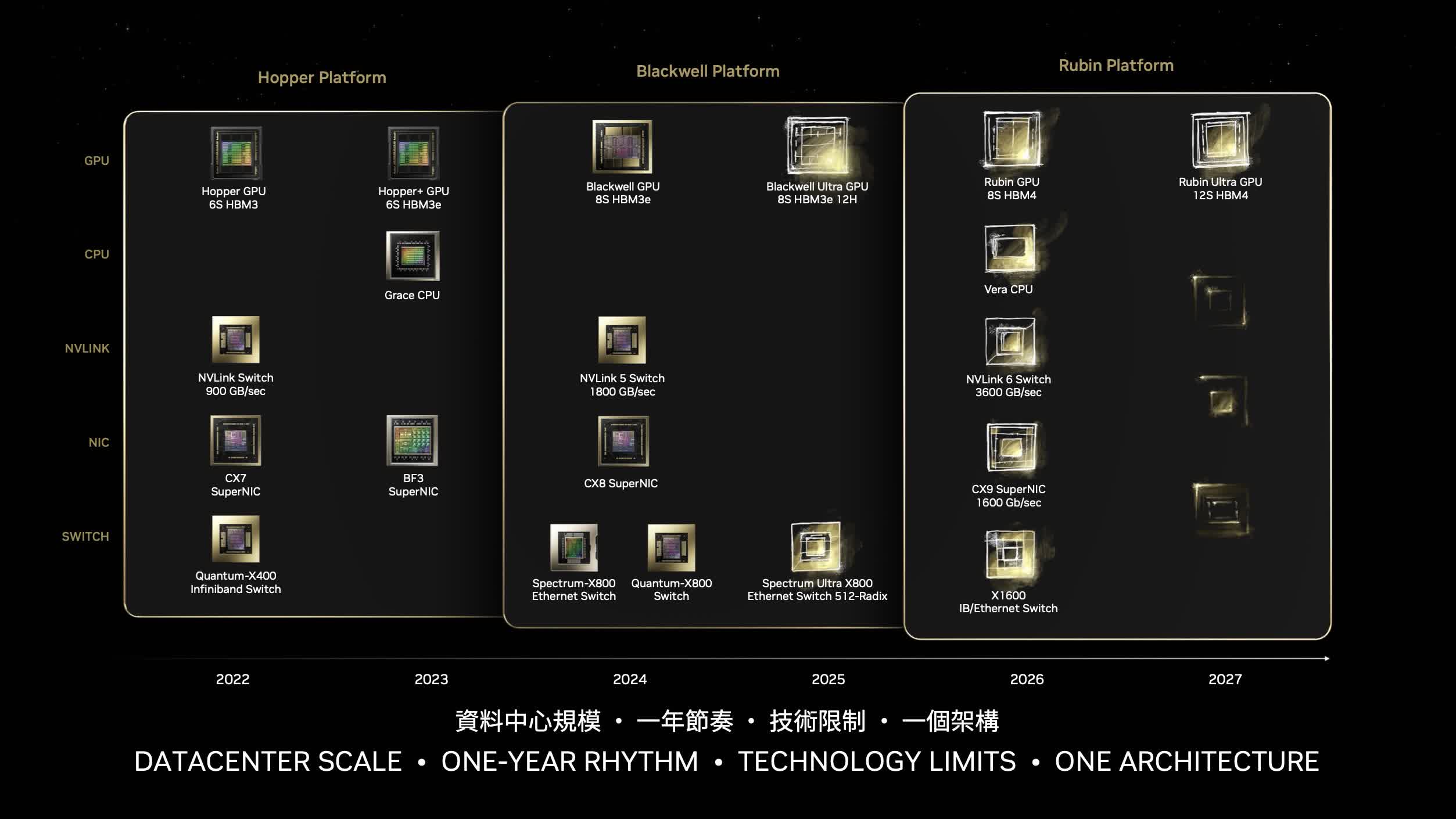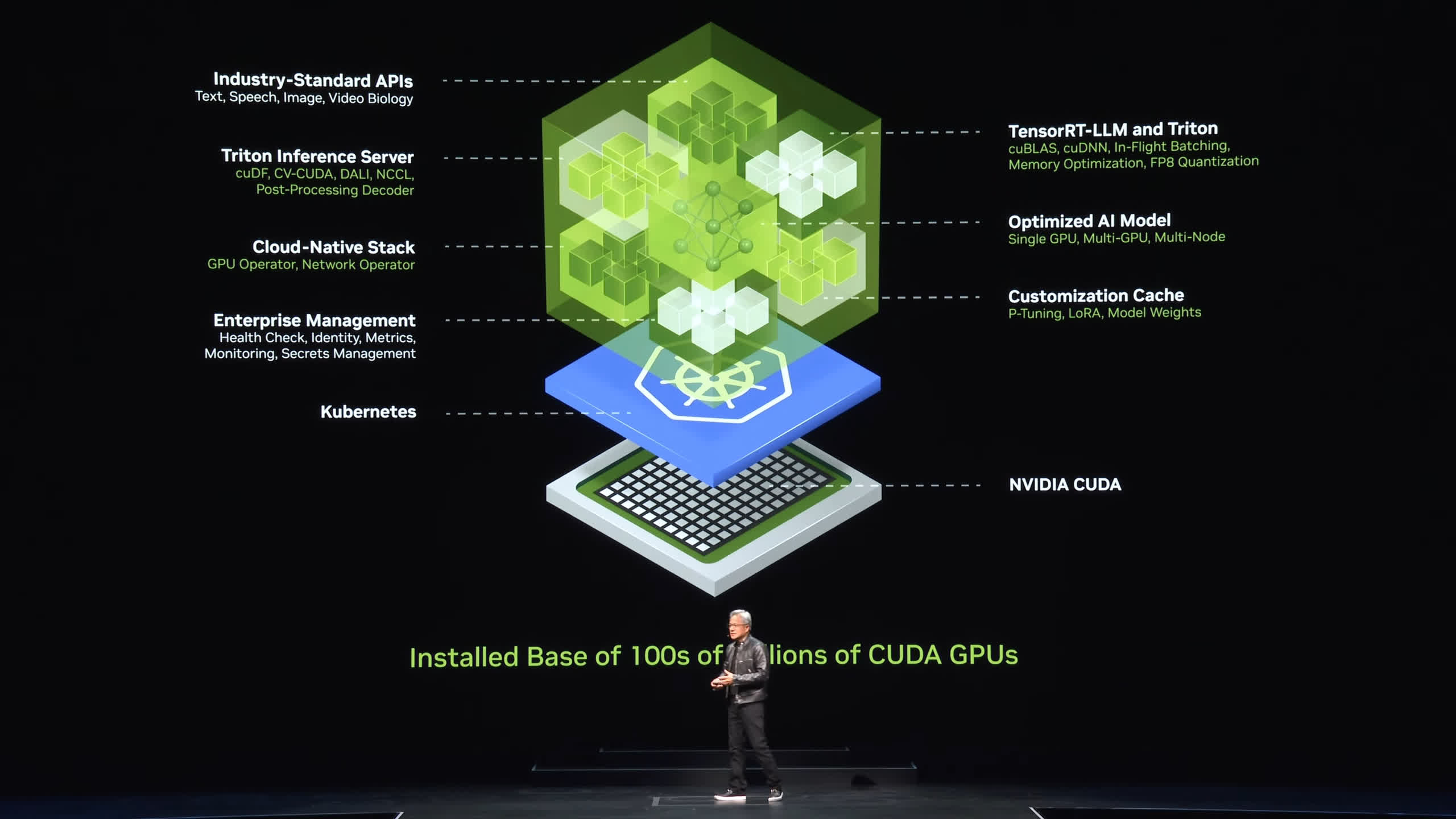This year’s Computex trade show is set to be a historic one, with the CEOs of all the world’s largest semiconductor companies giving keynotes and doing so under the aura of the generative AI revolution and the launch of the AI PC category.
The first keynote at this year’s event, appropriately enough, was given by Nvidia’s Jensen Huang, a Taiwanese native who has arguably become the face of the semiconductor revolution in the AI era.
Huang’s speech, which felt like the next stop in his worldwide stadium tour, essentially combined an entertaining lecture on the history and capabilities of GenAI with some specific examples of Nvidia products that are enabling the GenAI revolution. Along the way, he described the concept of a new industrial revolution, with AI factories that are powered – of course – by Nvidia hardware and software.

Much of the product-specific information was a rehash of the Blackwell platform news that the company unveiled at their GTC conference back in March. What was new, however, was the unveiling of a product roadmap that extends into 2027 with the debut of the Rubin platform as the next evolution beyond Blackwell. American astronomer Vera Rubin will be Nvidia’s next-gen GPU architecture patron.
While details remain scarce, in a market moving at such a breakneck pace as GenAI, just having a sense of general direction will be comforting for many. In fact, I’m expecting the notion of longer roadmap unveilings to be a big theme throughout the next several days of keynotes.
While big architectural changes are likely to continue at an every two years, Nvidia is now moving to make important GPU product enhancements every year.

One point that Huang made clear is that the roadmap for their core GPUs is taking on an accelerated annual pace. While big architectural changes are likely to continue at an every two years, Nvidia is now moving to make important product enhancements every year. How the company is able to execute on that new roadmap remains to be seen, but it’s clear they have no intention of slowing down or ceding any of their dominant position in AI accelerators any time soon.
Another relatively new area that Nvidia has been discussing more recently – and that Huang detailed in his keynote – was the company’s move into software and services.

Their CUDA platform for AI acceleration has already become something of a standard, but the company is pushing hard on its NIM (Nvidia Inference Microservices) offerings, which are now generally available. NIMs build on CUDA and wrap together all the necessary software components needed to build and enable AI applications across specific areas into prebuilt containers.
Their creation and release is part of a bigger company strategy to get into the enterprise software market and bring in an entirely new set of revenues. Though not discussed during the keynote, it’s also worth pointing out that Nvidia has recently been partnering with major enterprise hardware companies like Dell Technologies, Lenovo, HPE and others.
Because Nvidia isn’t generally seen as a software supplier, these partners could help dramatically increase the reach of these tools into the enterprise. This is going to be interesting to watch because those enterprise vendors could end up being an important channel for Nvidia’s software offerings over time.
What wasn’t announced in the keynote – but has been the subject of much speculation here at Computex – was the company’s intention to enter the AI PC market with an Arm-powered SoC, potentially built in conjunction with Mediatek.

The two companies are already working together on a combined chip for the automotive market so it’s not difficult to imagine they could extend that partnership into the PC market as well. If they did – and the timing would likely be sometime in 2025 or later – it could have a big impact on what is already becoming a crowded market for PC chip suppliers. We shall see.
Huang ended his Computex keynote with a forward-looking discussion on AI-powered robotics and the important role he believes they can play in that field thanks, in part, to their Omniverse platform. There’s little doubt that robotics is shaping up to be an important development both for industrial applications and human interactions, so this will be yet another interesting area to watch in the years to come.
Bob O’Donnell is the president and chief analyst of TECHnalysis Research, LLC, a market research firm that provides strategic consulting and market research services to the technology industry and professional financial community. You can follow Bob on Twitter @bobodtech

